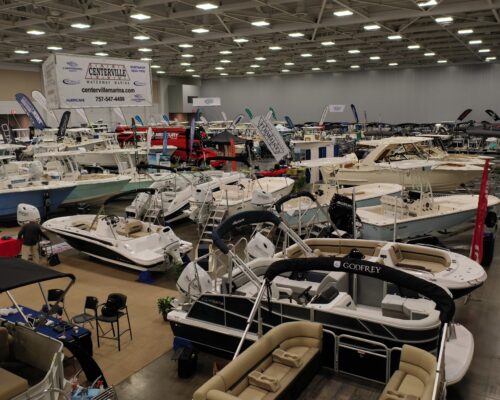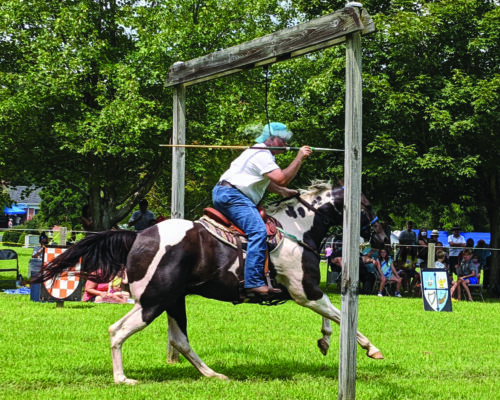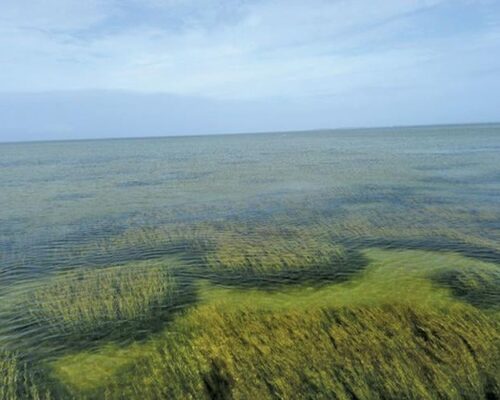The story unfolded on the Mediterranean coast of Italy, but quickly made headlines on the Chesapeake Bay. A few years ago, blue crabs, a non-native species in Italy, started turning up in fishermen’s traps by the ton along the northeast coast. While this might sound like a Maryland or Virginia waterman’s dream, the Italian fishermen and the government consider it a major problem. An emergency was declared in 2023, and today, Italy is doubling down on its efforts to eliminate blue crabs.
Here on the Bay, we cherish our crabs. We count down the months until crab season (it’s officially begun!), take pride in our hard-working watermen, and endlessly debate who has the best crabcake or the right way to pick a crab. In Italy, meanwhile, the government laments an unwanted invasion of the same crabs. Italians see “our” crab as a dreaded invasive species, the way we see snakeheads or blue catfish wreaking havoc on our native species.
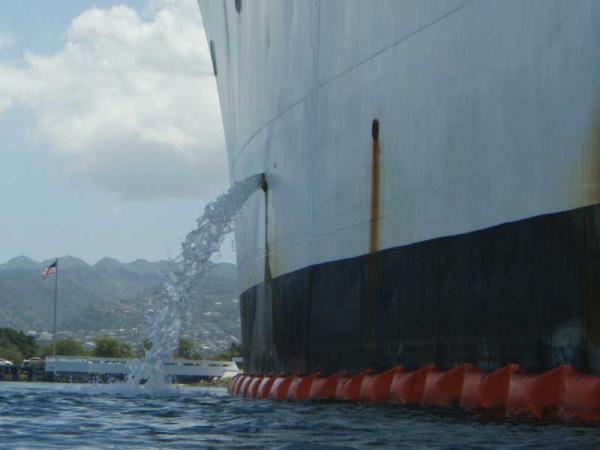
Like our invasive fish, the blue crab was released into foreign waters by human interventions without regard to the potential negative impacts. It is believed that blue crabs were in the ballast water of ships, swept up in North America and released into the water overseas. This practiced is addressed in an international treaty, created in 2017 to prevent the spread of potentially invasive species through ships’ ballast water by setting standards about how and where it can be released.
When we reported on the Italian crab problem in 2023, Veneto regional governor Mr. Luca Zaia had just made a television address warning of the ecological dangers of the “American blue crab”. He said the species was rapidly taking hold, and 326 tons of crab had been harvested in less than a year.
Last summer, Italy’s Agriculture Minister appointed the first ever “Commissioner for the Blue Crab”, Pref. Enrico Caterino, to tackle the spread. Advocates for the agricultural and fishing industries say the crabs are feasting on Italian clams, estimating the damage to clam populations has cost fisherman up to 100 million euros since the emergency began.
In January, Caterino announced a 10-million-euro “intervention plan to contain and combat the phenomenon of the spread and proliferation of the blue crab species”. The Contenimento del Granchio Blu plan, allocated for 2025 and 2026, aims to protect biodiversity and prevent further economic damage in the regions most affected by the crabs. Leaders will work to contain and dispose of blue crabs, protect existing aquaculture, and look for alternative uses for the large volume of crabs.
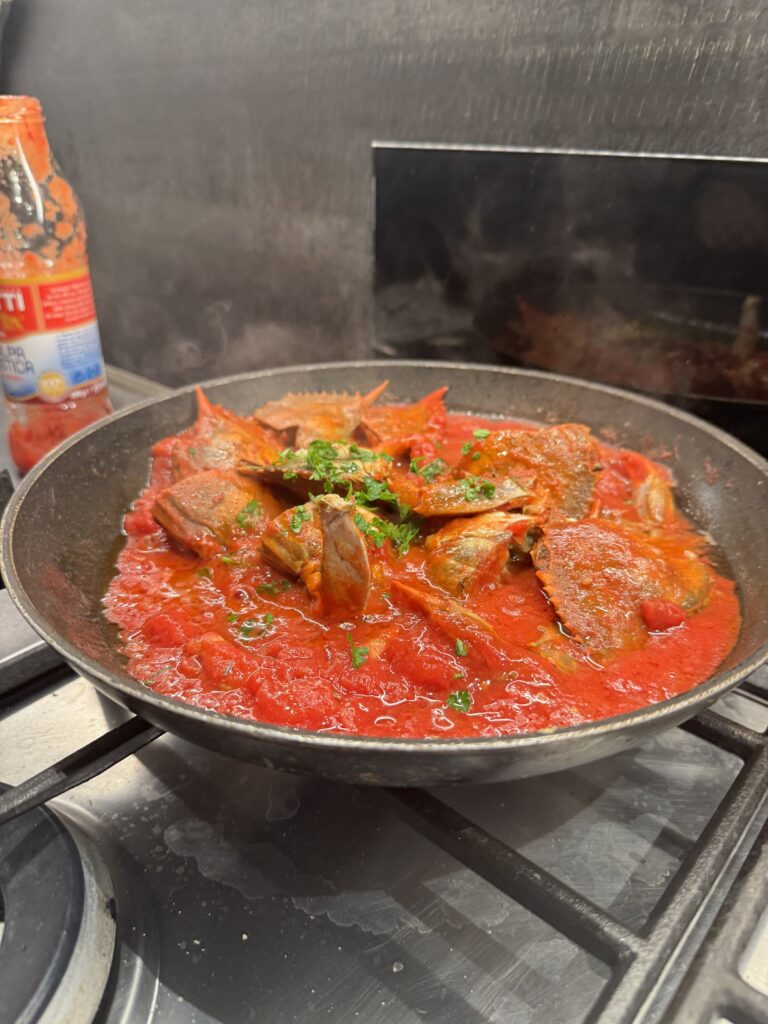
The most obvious way to get an invasive species out of the water? Harvest it. When Zaia raised the alarm about the crabs in 2023, the government began urging Italians to harvest and eat blue crabs to decrease their population. The Italian blue crab quickly became a culinary novelty. Grocery stores in the northeast region began carrying blue crabs (live, on ice in the seafood section). Because of their abundance, the crabs are far less expensive than those on the Chesapeake, and comparably huge in size.
At the time, we spoke with a Venetian man who had lived in Maryland during college, had fond memories of blue crabs, and quickly embraced their arrival on the Italian seafood scene.
Cesare Barban, who lives in the northeast province of Treviso, introduced his Italian friends to the species with a Maryland-inspired “crab feast”. He steamed live blue crabs with the Old Bay he ordered on Amazon, and even served corn on the cob alongside. While the Italians didn’t have proper crab mallets, they found an impromptu solution for cracking claws in the form of nutcrackers. Learning to pick and eat crabs for the first time made it a memorable meal.
When an upper Chesapeake Bay restaurant owner traveled to Italy, he couldn’t resist checking out “the competition”. Anthony Covatta, owner of Steak & Main in North East, Maryland, showed us what it was like seeing blue crabs in the Italian markets:
Two years later, the Veneto region is still trying to get ahold of the invasive blue crab problem. Nicole Zehner, a student at University of Maryland Law School studying global environmental law, wanted to dig into Italy’s response to the crab crisis. Zehner is writing a research report on the blue crab invasion in Veneto and decided she should visit in person to see the on-the-ground reality of the region’s blue crab response.
Before she and her boyfriend traveled to Italy, we connected Zehner with our Italian crab enthusiast, Cesare Barban, who graciously invited them to dine with him and his fiancée. Since 2023 he has leveled up his crab picking game with real crab mallets and an Old Bay-branded table protector, both sent by a friend in Maryland. Although blue crabs continue to multiply, Barban says grocery stores don’t always stock them and they are a little harder to find than they were a couple of years ago.
Once Barban managed to procure some crabs for his American visitors, he welcomed Zehner and her boyfriend for a crab-centered dinner. It was a lengthy process. After steaming the crabs, it took the group 90 minutes to pick them and gather enough meat for their meal. Then, they began cooking the actual dinner of crabcakes and crab pasta. They topped the meal off with homemade tiramisu.
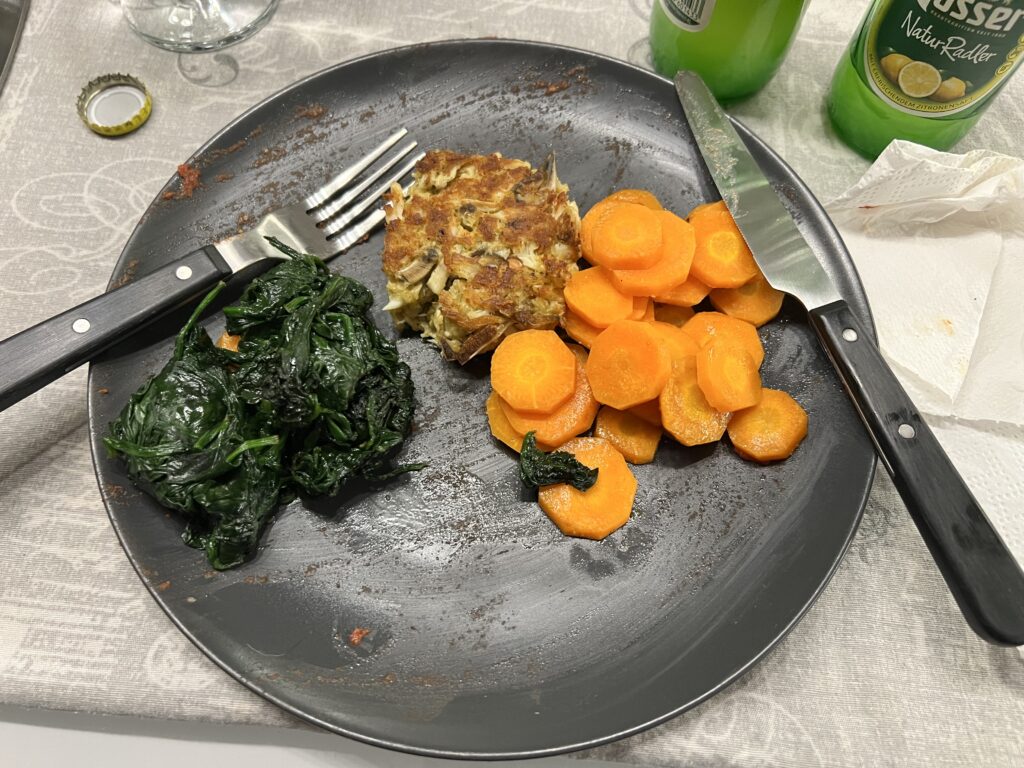
While Zehner and the group enjoyed their feast, she admits they got pretty hungry during the full two hours of prep work the meal required. Cooking with crab in Italy is problematic because, despite the abundance of blue crab, crabmeat is not sold pre-picked in a tub. Crabs are only sold whole—there is no commercial blue crab processing in the region.
Zehner learned on her trip that a restaurant wanting to serve crab pasta, for example, would have to source live crabs, steam them in the kitchen, and enlist their workers to pick the meat from the crabs onsite. That amount of work is prohibitive for restaurants that want to serve blue crab dishes.

We were surprised to learn of another challenge facing restaurants trying to encourage diners to eat blue crab. The species is commonly referred to as “American blue crab”. In speaking with a restaurant owner, Zehner found out that Italians tend to think of “American” food as unhealthy, often associating it with fast food. The name “American crab” turns some diners off. Other diners simply aren’t convinced that blue crab can taste even better than Italy’s native crab species, even though its sweet, white, flavorful meat is prized where we live.
At one restaurant, Trattoria da Sergio, the owners introduce blue crab as a delicacy; a special meal. They have also found a more practical, less labor-intensive way to serve crabs—by embracing the softshell crab. There’s no picking required, and the dish looks so exotic that it’s easier for Italian foodies to accept it as a delicacy. From a Bay perspective, the dish’s name on the menu isn’t so appealing. Instead of calling it a softshell, the Italian name translates directly to “molting crab”.
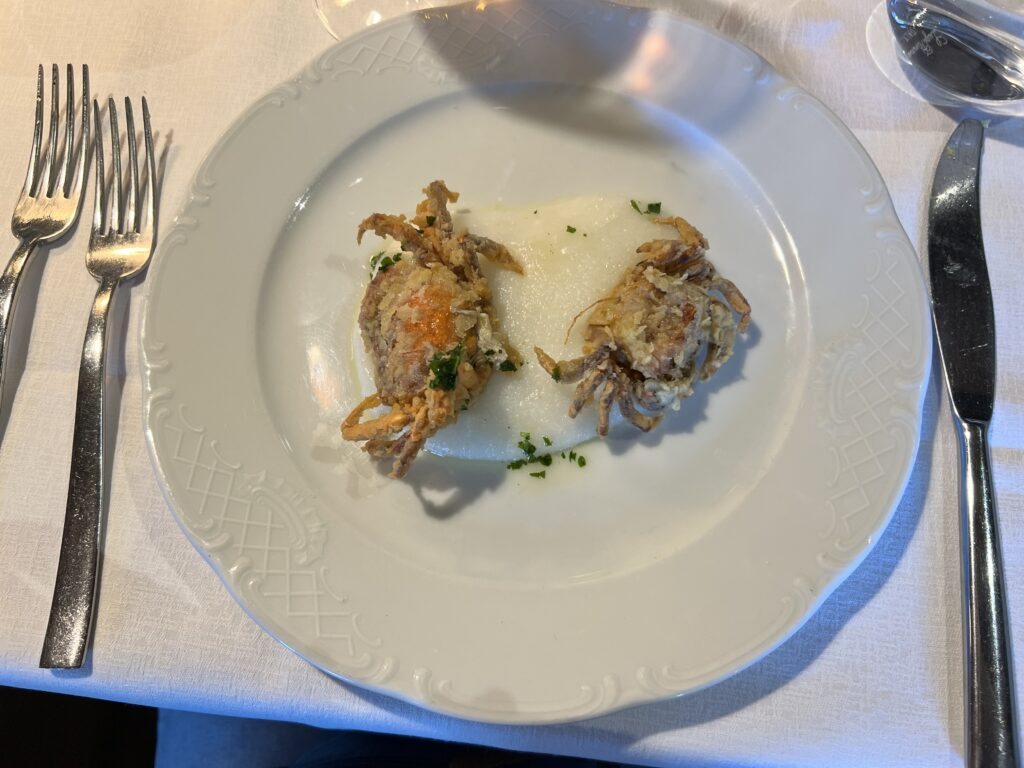
Although individuals like Barban and restaurants like Trattoria da Sergio are putting in the effort to keep blue crab consumption going, the government may need to pursue other avenues to control the blue crab population. As the emergency continues, Zehner says they may look into introducing a predatory species to take down the invasive crab, rather than relying on the commercial fishery alone to wipe them out.
Zehner points out, “Prevention is obviously the first goal,” citing the international treaties meant to prevent the ballast water issue that caused the introduction of blue crabs in the first place. Zehner’s research paper will compare Italy’s handling of the blue crab emergency to the way the United States handles invasive marine species. She has two more years of law school left and is working towards her environmental law certificate.
Meanwhile, Chesapeake Bay Magazine will be monitoring the Italian government’s efforts to get rid of the same crabs we go to great lengths to enjoy.


